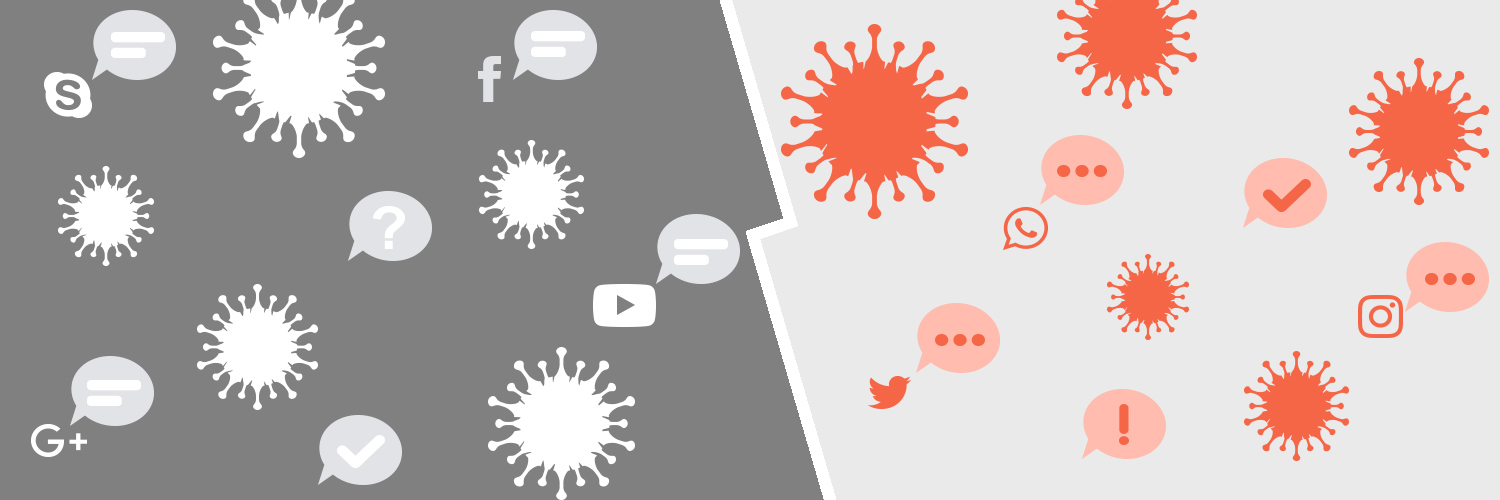
Gary Schwitzer, veteran health care journalist and publisher of HealthNewsReview.org, a longstanding health media watchdog project, recently spoke to Content Science about COVID-19 communication challenges and solutions. Among those challenges is keeping up with news about a potential vaccine to protect against the virus. In part two from our interview with Schwitzer, he provides his assessment of the state of COVID-19 vaccine science so far and how communication professionals can cover vaccine news responsibly.
The tsunami of news and information around potential vaccines is relentless. What do communication professionals need to understand about the state of the science at this point?
SCHWITZER: One of the first things that comes into my mind is the need to understand the tremendous pressure and the unprecedented race that is underway and the impact on us as communicators. So we have what, something like 140 vaccines in development, with a far smaller number that appear to be in the lead in the forefront of progress with research. But our antennae need to be up when we hear the very first news about a vaccine coming not in even a preprint and not in a peer-reviewed journal article, but in a news release from the manufacturer and we have seen this over and over again. And, so we need to apply all of the rigor and all of the caveats that we have been talking about in this interview so far [See “Health and Science Communication in the COVID Era: A Q&A With the Publisher of Health News Review“] when those things cross our desk.
But as we look at even the published findings when that eventually happens there are things that we need to be aware of.
[A recent] Monday was just one of these classic instructional days in my mind because on that one day we had news about a new non-vaccine treatment interferon beta protein, which as I woke up that day and wrote about the BBC was blasting a headline about a “breakthrough.” Well that “breakthrough” was the word used by the company trying to market this approach. When you looked for and found any independent perspectives about the most enthusiastic you would see would be “yes, this has potential.” I quoted a couple of smart docs on Twitter saying right now it looks like we just have a news release about a small trial. Somebody else said we have seen a lot of COVID clinical trial results by news release only, here’s one more.
But on that same day, there were two vaccine studies in the Lancet. One of them on an Oxford research team and one of them on a Chinese vaccine study. I was really struck by some immediate smart input from both clinician researchers and journalists and I wrote about this. It wasn’t just the vaccine manufacturers who were touting the early results, but the editor-in-chief of the Lancet tweeted “The vaccine is safe, well-tolerated, and immunogenic.” Dr. Robert Califf, who is the former commissioner of the FDA, caught that and wrote about that editor, Richard Horton, “I know @richardhorton1 knows this, but for lay people viewing this, ‘safe’ in this context just means nothing bad happened that should pause larger trials. Safety of vaccines can only be determined by very large, controlled trials followed by serious post-market surveillance.”
Think about that. It wasn’t just the hype from the manufacturers, but there was questionable wording from the editor of the journal. But we need to realize that the journals are in competition as well. If you are a vaccine manufacturer, researcher, and you think you have hot stuff here, “where am I going to submit this?”
The words matter and the data matter. Choose your words carefully. But maybe you don’t even need to choose your words so carefully if you’re dwelling on the data more than any descriptive language.
Carolyn Johnson at The Washington Post co-authored a story about those two trials, and about the Oxford study she said that was described as promising, while the Chinese study “showed what researchers not involved in the study described as modest positive results.” Then she quoted a vaccine expert, Paul Offit, and “His biggest concern about the Oxford study was that while the vaccine triggered the immune system best when a second shot was administered, that two-dose regimen was only tested in 10 patients.” Then they quoted Baylor’s Peter Hotez: “There’s no showstopper here…The bottom line is there’s maybe some promise, but definitely you cannot declare victory by any means on these two vaccines. There’s nothing here that would cause me to say we can now release this to the public.”
I know when I am in over my head, so I turn to people I trust, who have no dog in the hunt, do not have a conflict of interest, have a clear expertise, and inject some balance to perhaps counter some bias that may exist in the messaging that has already come out.
Just think about it, something like 140 vaccine ideas in the works at some stage, a dozen or so well further down the pipeline and then all this talk, for example, I put on my site the front page of the Daily Mail in the UK saying a “Vaccine for Christmas.” We have tried to teach on Health News Review over the years, if you are going to use that kind of a crystal ball, you better be able to defend how your crystal ball works that way.
And when we are talking about faster vaccine development than we have ever seen before…it’s remarkable that we are able to talk about even the preliminary results that we have seen. We are racing and we are speeding and it is preliminary and things happen when you race and stuff happens when you have competing companies and competing governments with their competing arrangements.
Even if as the Daily Mail projected we’d have a vaccine for Christmas this year. Is that one vaccine? Is it two? Let’s just say it is one. What did that data look like? And we don’t want to hear that at Christmas time first in a news release from the manufacturer or even a news release that doesn’t have all the data in it from government agencies, which we certainly have seen happen in this country already.
Also know that even if it is in a thousand patients or more, it still isn’t going to be the millions we want to vaccinate just in our country. Whatever the pool is, whether it is dozens, hundreds, or thousands, we don’t get the true sense or true impact of potential harms until something is in more widespread use for a longer period of time. That is the risk we run with racing things through to production. This is what we need to realize.
What will be the things that will or may show up only post approval in some call phase 4 of a trial? I remember in the 70s and the swine flu vaccine that was rushed into development. Thankfully the swine flu didn’t arise to be the threat that it was thought that it would be but meantime the vaccine was rushed into development and mass production. In the end there were concerns and there were issues that arose only after approval and dissemination, Guillain-Barre syndrome was a leading issue.
Cost, equitable distribution, because we are not going to have vaccine development with an output to serve our entire population so how do we guarantee equitable arrangement? How is that rolled out? These cost and access issues have to be in the forefront of our minds as well.
What are your top tips for communication professionals covering COVID-19 in the months ahead?
SCHWITZER: The words matter and the data matter. Keep uncertainties, and limitations, and caveats and context in the forefront of your mind and in your messaging, early in the message and throughout. Sometimes it is how you open a message, lead a story that gets people, sometimes it is how you end a story. Oftentimes we save all the caveats until the very end and yet we have readers who left us after the second paragraph and didn’t get that. So that’s why I say early, at the end, and throughout. Because to project certainty where it simply does not exist is communication malpractice at a time like this and with a public health issue like this.
Events, Resources, + More
The Ultimate Guide to End-to-End Content
Discover why + how an end-to-end approach is critical in the age of AI with this comprehensive white paper.
The Content Advantage Book
The much-anticipated third edition of the highly rated book by Colleen Jones is available at book retailers worldwide. Learn more!
20 Signs of a Content Problem in a High-Stakes Initiative
Use this white paper to diagnose the problem so you can achieve the right solution faster.
Upskill with Content Science Academy
Training for modern content roles through on-demand certifications + courses or live workshops.







Comments
We invite you to share your perspective in a constructive way. To comment, please sign in or register. Our moderating team will review all comments and may edit them for clarity. Our team also may delete comments that are off-topic or disrespectful. All postings become the property of
Content Science Review.